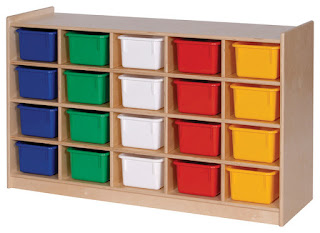There are many factors to consider when thinking through the storage and space in your classroom. In Episode One, I talk about how to use the space in your classroom as a tool for movement, instrument set-up and storage, and organization ideas.
Consider the shape of your room so that you can determine the optimal set-up that will allow for transitioning between using instruments, singing, movement and storage. There are many types of classroom layouts. The classroom spaces I have taught in include:
Another option would be to have 1/2 the class perform the movement while the other 1/2 of the class plays instruments, sings or becomes the audience.
Perform folk dances with multiple longways sets.
Use carpet markers, sit spots, dot spots or velcro spots
Use carpet tape
- Double U Shape
- Several lines
If you only have a few instruments, make a line at the front of the room and assign students into rows behind each instrument. Students will rotate.
I shared in the podcast that I had a wooden shelving system with colored bins that was an amazing way to store unhitched percussion. This worked particularly well for smaller unpitched instruments such as tambourines, rhythm sticks, triangles, guiros, etc...
For Drums
Stack two drums on top of one another with heads of drumming meeting together. This can save space by storing them vertically.
For Barred Instruments
Drue Bullington wrote an amazing article about ideas for storing barred instruments. Check out the article here. This is the article I mention in the podcast - so many brilliant ideas and organizational tips for barred instruments.
Other ideas:
Use or build shelves to fit your space
Store on closet shelves
Do not stack or store on top of each other - if at all possible!
For Recorders
If all students have an individual recorder instrument, place them by class into a bin.
If you have a classroom set, store on peg stands and give students the responsibility to wash the mouthpieces between class.
Music Classrooms
Portable
My classroom was completely separate from the rest of the building and included a bathroom, sink and hangers for coats. It also shook like crazy whenever students marched to music, but it was a classroom and I didn't have to worry about the sound from instruments traveling to other rooms around me.The Box
This is the classroom that is literally a square, or slightly rectangular, box shape. There are usually several closets or a small work space that are to the side of the room.Stage/Classroom
This is where there is a partition or sliding wall on one side of the classroom that allows the room to become the stage for performances. It is often adjacent to the cafeteria.Cart
My first year I taught from a rolling cart and traveled from classroom to classroom. Whatever was needed for class was kept on the cart.Physical Movement
Space Restriction Ideas
If your class is too large to fit in one circle, perform in concentric circles.Another option would be to have 1/2 the class perform the movement while the other 1/2 of the class plays instruments, sings or becomes the audience.
Perform folk dances with multiple longways sets.
Flooring
Consider whether you need a rug to dampen sound or add warmth or color to your room. Also keep in mind whether it restricts movement.Use carpet markers, sit spots, dot spots or velcro spots
Use carpet tape
Instruments
Barred Instrument Arrangements
- U Shape- Double U Shape
- Several lines
If you only have a few instruments, make a line at the front of the room and assign students into rows behind each instrument. Students will rotate.
Storage
For Unpitched Percussion:I shared in the podcast that I had a wooden shelving system with colored bins that was an amazing way to store unhitched percussion. This worked particularly well for smaller unpitched instruments such as tambourines, rhythm sticks, triangles, guiros, etc...
This was the system that I had in my classroom. It is often sold in catalogs that sell preschool furniture or in the larger catalogs for classroom furniture. I haven't been able to track down an exact company to share where you can purchase something like this.
For Drums
Stack two drums on top of one another with heads of drumming meeting together. This can save space by storing them vertically.
For Barred Instruments
Drue Bullington wrote an amazing article about ideas for storing barred instruments. Check out the article here. This is the article I mention in the podcast - so many brilliant ideas and organizational tips for barred instruments.
Other ideas:
Use or build shelves to fit your space
Store on closet shelves
Do not stack or store on top of each other - if at all possible!
For Recorders
If all students have an individual recorder instrument, place them by class into a bin.
If you have a classroom set, store on peg stands and give students the responsibility to wash the mouthpieces between class.

Comments
Post a Comment